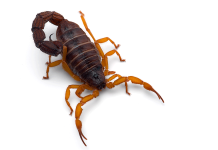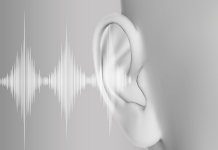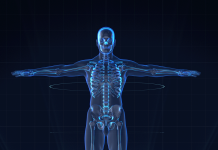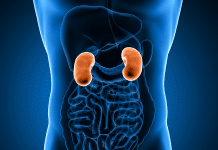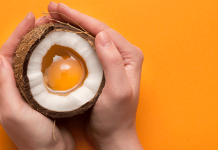Introduction
The word migraine is related to Greek, hemi (semi), and cranium (skull), ‘hemikrania’ which means “pain on one side of the head”. Although a migraine is a term used to describe a severe headache by many people; yet it is, due to, specific physiological changes that occur in the brain and lead to the characteristic pain and associated symptoms. However, the migraine is a powerful headache that often happens with nausea, vomiting and/or sensitivity with light or sound. It can last from two to seventy-two hours, typically, affecting half of the head. Furthermore, fifteen percent of the world population is affected by this disease. However, the question, all about a migraine, can be elaborated to the difference between a simple headache and migraine, the signs and symptoms of a migraine, and causes and triggers of a migraine. On the contrary, examining the difference between a headache and migraine would be convenient.
Lets discuss all about migraine.
Difference between Migraine and Headache
A simple headache is a sensation of pressure and tightness and the pain is not pulsating while the severity can be mild to moderate. A headache is not disabling and there is no worsening of the pain with doing routine physical activities.On the other hand, during a migraine, a person feels the sensation of pressure and tightness as well as the pulsating pain – and which does not seem to sooth. Furthermore, a headache does not stay for seventy-two hours and there is no worsening of pain routinely activities. Additionally, there is no associated nausea, vomiting, and photophobia. However, to completely understand the difference, the discussion should be moved towards the signs and symptoms of a migraine.
A migraine typically a periodic severe headache connected with autonomic symptoms. About fifteen to thirty percent people with migraine experience migraine with aura. A migraine with aura is a warning symptom of migraine which can range from a flashing light or blind spot in one eye to numbness or weakness on one side of the body. The aura may last for several minutes and then settles as a headache begins, or may last until a headache resolves. On the other hand, for people who have never experienced an aura, symptoms for them could be frightening and can urge the symptoms of a stroke. However, the severity, pain, duration of the pain and frequency of attacks can be variable. Similarly, a migraine lasting longer than seventy-two hours is migrainosus. On the contrary, generally a person experiences four possible phases, besides not, all the phases are necessarily experienced by everyone.

Phases
Firstly, prodrome occurs hours or days before a headache. Prodrome or premonitory symptom occurs in about sixty percent of the people who experience a migraine. It can range from two hours to two days prior to start the aura or a migraine. The symptoms include altered mood, bipolar disorder, anxiety disorder, craving for certain foods, stiff muscles constipation or diarrhea and sensitivity to smell or noise.
Secondly, the aura precedes a headache immediately. It is a neurological phenomenon that occurs prior or during a migraine. Also, it lasts for less than sixty minutes generally. On the contrary, symptoms of aura can be of three types, namely, visual aura; sensory aura; and motor and many people experience more than one. Around ninety-nine percent cases experience the visual aura, and fifty present of the cases do not experience sensory or motor aura and is the most experienced symptom of all. Vision disturbance can be experienced in the form of a blind spot in one eye or flashlights. However, the sensory aura is the second most experienced symptoms that cases experience after a vision. It can feel like the pins and needles on one side of the hand and arm and spreads to the nose (on the same side) and the numbness occurs when after the tingling has passed. On the other hand, the motor aura is the least experienced symptoms of all. It indicated that this is a hemiplegic migraine and weakness often stays for less than an hour.
Next, pain phase which is unilateral throbbing, and moderate to the severe intensity of pain. It usually increases gradually and physical activities worsen it. On the other hand, in forty percent cases, the migraine is bilateral and neck pain is commonly associated with it. Bilateral pain is mostly experienced by those who experience a migraine without aura. Furthermore, pain lasts for two hours to seventy-two hours in adults and almost for one hour in children.
The sensation, felt by people, may vary from person to person; some people report to have refreshed after the pain is gone while others report depression. However, the phases of a migraine can vary from person to person. Notwithstanding, let’s discuss the causes and the triggers of a migraine that can be associated with one’s situation.
Why women are more likely to experience migraine
Generally, women are more likely to experience a migraine than men. Triggers of a migraine happen due to the normal fluctuation, which occurs with regular menstrual cycles that may predispose some women to experience a migraine. The usual causes of a trigger migraine could be a type of contraceptive (birth control pills). Although, underlying causes of a migraine are still unknown yet they are believed to be related to a mixed environmental and genetic factor. While a migraine was once believed to be in those with high IQ, this does not appear to be true. On the other hand, causes can be a cause of a number of psychological disorders such as depressions, anxiety, and bipolar disorder.
Causes of a migraine run about two-thirds of the cases in families and rarely occur due to a single gene defect. In addition to, studies of twin shows thirty-four to fifty-two percent influence of genetic disorder. However, single gene disorder is rare. On the contrary, migraines cause through triggers have seen in a minority of the cases. Many things such as fatigue, weather, and certain foods are believed to be the cause of trigger. Furthermore, some of those causes are oversleeping; stress; alcohol beverages; exposure to the strong smell, bright light, and loud noises; and certain foods like red wine, aged cheese, chocolate, dairy products, artificial sweetener etc.
Conclusion
Thus, all about a migraine is all about understanding: the difference between a headache and migraine, signs and symptoms of a migraine and causes and triggers of a migraine. Although having enough knowledge cannot only cause to feel an experience of a migraine yet it also keeps one away from the things that can cause and trigger it. So, all about a migraine is about understanding and abstaining all the ins and outs of a migraine.




